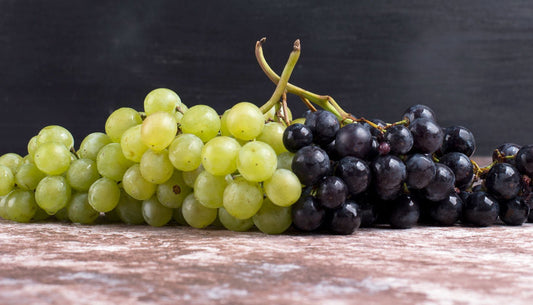Hello, Luis here. Today, I wanted to introduce you wine lovers to the world of Portuguese white wine.
For many people, Portugal means Port or rich, full-bodied reds. Yet over the past few decades, our white wines have quietly become some of the most exciting and best in Europe. They are fresh, vibrant, and full of stories that connect our land, climate, and centuries of tradition.
If you have ever enjoyed a Sauvignon Blanc, Chardonnay, or Pinot Grigio and wondered what else might be out there, this guide is for you. By the end, you will understand the key grapes, the most important regions, and how to taste, serve, and pair Portuguese whites with confidence.
Why Portuguese White Wine Is So Special
Portugal may be small, but it is one of the most diverse wine countries in the world. Our landscape stretches from cool, green Atlantic hills in the north to warm, sunlit plains in the south. This range allows us to create wines that can be crisp and mineral, or rich and tropical, often within a few hours’ drive of one another.
Then there are the grapes themselves. Portugal has more than 250 native varieties, many of which grow nowhere else. That is why our wines have such a distinctive personality. They are shaped by tradition, diversity, and the sea that surrounds us.
The best part is that you do not need to be an expert to enjoy them. All you need is curiosity, an open mind, and perhaps a corkscrew.
Understanding Portugal’s White Wine Regions
If you look at a map of Portugal, you will see a narrow country that hugs the Atlantic coast. This geography creates distinct regional characters that define our white wines.
Vinho Verde (veen-yoo VEHR-deh) – Fresh and Youthful
The most famous northern region for white wine is Vinho Verde. Here, the cool and rainy climate produces crisp wines with low alcohol and bright acidity. It is where Alvarinho and Loureiro thrive.
If you enjoy light, zesty wines with citrus and floral notes, begin your journey here. Try Soalheiro Alvarinho or Quinta d’Amares Loureir. Both are refreshing and made for seafood.
Dão (down)
Further inland and higher in altitude, Dão produces structured whites with balance and subtlety. The granite soils and cooler nights bring minerality and depth that are perfect for the Encruzado grape.
If you enjoy white Burgundy, you will love Taboadella Encruzado. It has sophistication, freshness, and a smooth texture, with flavours of citrus, stone fruit, and gentle spice from oak ageing.
Alentejo (ah-len-TAY-zhoo)
In the south, long sunny days produce golden wines filled with ripe fruit and a soft, creamy texture. Antão Vaz is the signature grape here, offering tropical flavours of mango and pineapple.
For a taste of sunshine in a glass, open the Herdade do Rocim Branco. It is smooth and deeply satisfying, a perfect match for roast chicken or creamy seafood dishes.
Douro (DOH-roo)
The Douro is famous for Port and full-bodied reds, but the region also produces elegant white wines from higher altitude vineyards. Grapes such as Rabigato, Gouveio, and Viosinho give balance, freshness, and complexity.
These whites are still a hidden secret. They show real character, combining bright fruit with the minerality of schist soils and the freshness of mountain air.
Meet the Grapes
Alvarinho (ahl-vah-REEN-yoo)
Alvarinho is one of Portugal’s most iconic white grapes. It is aromatic, fruity, and full of life, with notes of peach, apricot, and citrus alongside a touch of minerality.

Where it grows best: The northern region of Vinho Verde, especially Monção e Melgaço.
Tastes like: A mix of Riesling and Sauvignon Blanc in style.
Food pairing: Prawns, oysters, sushi, or grilled sardines.
Try it here: Soalheiro Alvarinho, a benchmark wine that perfectly defines freshness.
Loureiro (loh-RAY-roo)
Loureiro means “laurel” in Portuguese, and the name suits it perfectly. The wines are floral, delicate, and beautifully aromatic, with notes of lime, blossom, and fresh herbs.

Where it grows best: The Lima Valley in Vinho Verde.
Tastes like: Something between Pinot Grigio and Muscadet, easy to love and endlessly refreshing.
Food pairing: Grilled fish, salads, or Asian dishes.
Try it: Quinta d’Amares Loureiro
Arinto (ah-REEN-too)
Arinto is one of Portugal’s most refreshing and versatile white grapes. It offers bright acidity with flavours of lemon, green apple, and a clean, mineral edge that always reminds me of sea air.

Where it grows best: Arinto can be found throughout Portugal, from the coastal vineyards near Lisbon to the warm plains of Alentejo.
Tastes like: It is often compared to Sauvignon Blanc for its lively, mouth-watering character, but with a distinctly Portuguese twist.
Food pairing: It is a natural match for fried fish, ceviche, or soft goat’s cheese.
My #1 beginner recommendation: For a perfect introduction to this grape, I recommend the Esporão Reserva White Organic. Made in Alentejo, it blends Arinto with other native varieties to create a crisp and vibrant wine that balances fruit, freshness, and gentle complexity. It is the kind of wine that tastes just as good on a sunny afternoon as it does beside a seafood dinner.
Encruzado (en-KROO-zah-doo)
Encruzado is the choice for those who love depth and structure. It combines freshness with richness, showing flavours of lemon, peach, and sometimes almond or spice from oak ageing.

Where it grows best: The high-altitude vineyards of Dão.
Tastes like: A Portuguese take on Chardonnay, smooth and elegant.
Food pairing: Roast chicken, creamy pasta, or baked cod.
Try: Taboadella Encruzado
Antão Vaz (ahn-TAO vahsh)
Antão Vaz captures the warm and generous spirit of Alentejo. It produces full-bodied wines with tropical flavours of pineapple and mango, and when aged in oak it can take on gentle notes of vanilla and spice that add real depth.

Where it grows best: The sun-soaked vineyards of Alentejo in southern Portugal, where long days and cool evenings help the grapes ripen beautifully while keeping their freshness.
Tastes like: A Mediterranean-style Chardonnay with a distinctly Portuguese personality. It is smooth, rich, and full of sunshine, yet balanced and refined.
Food pairing: Delicious with creamy risotto, roast turkey, or buttery seafood dishes such as lobster or monkfish.
My tip: For a perfect example of this style, try the Planalto White. It highlights the ripe fruit and rounded texture that Antão Vaz is known for, while keeping a lively freshness that makes every sip inviting. It is one of those wines I like to serve when I want something both easy to enjoy and quietly impressive.
The Taste of Portugal
Portuguese white wines offer a wonderful balance of freshness and depth. Coastal wines such as Alvarinho and Arinto feel vibrant and salty, while inland varieties like Encruzado and Antão Vaz have richness and roundness.
That combination of energy and texture is what makes them so versatile at the table.
Serving and Storage
To enjoy Portuguese white wine at its best, serve it cool but not icy. Chill your bottle for around two hours before opening. Lighter wines like Alvarinho or Loureiro taste best between 8 and 10 degrees Celsius, while fuller styles such as Encruzado or Antão Vaz shine at around 10 to 12 degrees.
A tulip-shaped glass is perfect, as it helps capture the aromas. Keep unopened bottles in a cool, dark place, and if you do not finish one, replace the cork and refrigerate it. Most Portuguese whites will stay fresh for up to three days.
Food Pairing Inspiration
One of the great pleasures of Portuguese white wine is how easily it pairs with food.
Lighter wines like Loureiro and Arinto love seafood and salads.
Fuller styles such as Encruzado and Antão Vaz pair beautifully with roast chicken, creamy pasta, or cod.
Alvarinho is made for prawns, clams, or sushi.
If you are enjoying Portuguese dishes like bacalhau (salt cod) or arroz de marisco (seafood rice), you will find that these wines complete the experience perfectly.
Common Beginner Questions
Are Portuguese white wines dry?
Yes, most are dry and refreshing, though some Vinho Verdes have a light, natural spritz that adds charm.
What is the difference between Alvarinho and Albariño?
They are the same grape, but Portugal’s Alvarinho, especially from Monção e Melgaço, tends to be riper and rounder.
Can Portuguese whites age?
Many are best enjoyed young, but Encruzado and some Alentejo blends can develop beautifully for several years.
Are they expensive?
Not at all. Portuguese whites offer outstanding quality and value compared with many other European wines.
Where to Begin
If you would like a simple starting point, begin with one of these bottles from our
Portuguese White Wine Collection:
My Final Thoughts
Portuguese white wine is more than a drink. It reflects our landscape, our culture, and our way of life. From the Atlantic winds of Minho to the golden light of Alentejo, every bottle tells a story of place and patience.
If you have never tried one before, start with a bottle that speaks to you. Pour a glass, take a sip, and taste the freshness of Portugal.
Saúde, and welcome to the world of Portuguese white wine.





